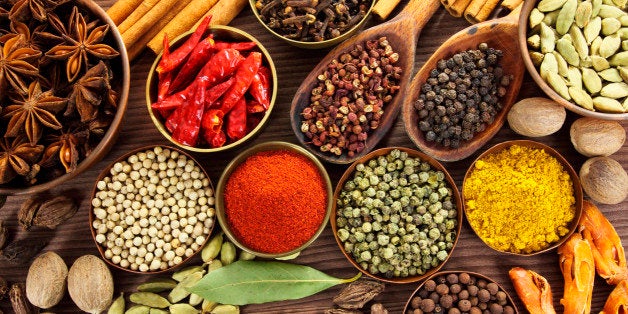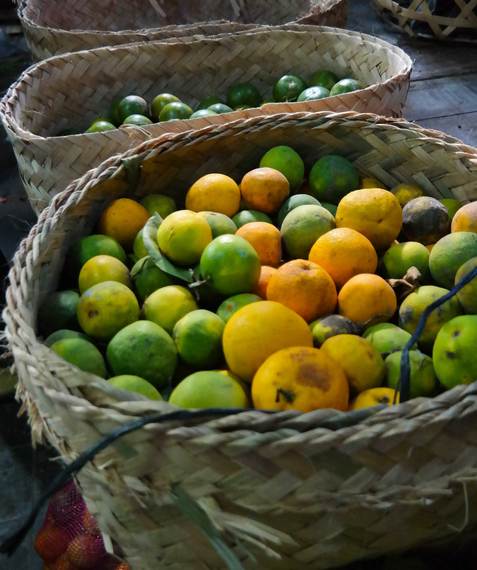
If you are looking for an article listing the fifteen weirdest things to eat around the world, this isn't it. I am an adventurous foodie, but I don't hunt for the "weirdest" food experiences when I travel. In fact, I gladly said no to tasting shark fin soup in Singapore, and I don't even eat some of the more exotic foods (like blood pancakes - no thank you!) in my own home country, Finland. Even so, it's possible to discover great new foods when traveling, without having to stretch far out of your culinary comfort zone.

Image by Katja Presnal
Ask the locals for recommendations
Don't worry, you don't have to try blood pancakes next time you're in Finland. I have many other great recommendations to share. My favorite Finnish food is salmon soup, served with a piece of dark rye bread -- accompanied with a view of archipelago and the sounds and scent of the Baltic sea, like on Pellinki island in Porvoo.
I know many people also love to share their food recommendations, so I encourage you to discover authentic local foods on your travels by asking locals for restaurant recommendations, or even eating at their homes if possible. One of the reasons I love connecting with people on social media sites and through apps like Findery before I travel is to connect with locals and get their recommendations. Anyone can be a "travel expert" on social media and I often get the best tips from people who are passionate about their hometowns, even if they don't travel much. This especially applies to food!
Start your culinary adventures at home
Still worried about venturing out into the wide world of food? Start at home! You can train your culinary palate - the same way you can train yourself to eat with chopsticks. I recommend doing this by traveling "around the world" at dinner time. By this I mean: even when you are in your hometown, go eat at an Indian, Thai, Greek, German, or whatever-is-exotic-to-you restaurant. Look for non-chain restaurants, preferably one run by an immigrant who wanted to move to your country to share their native cuisine. For example, we love to eat at a great Korean restaurant in our town.
You can also slowly develop a lifestyle where global cuisine is part of your everyday life by learning to cook foods from different cultures. Take cooking classes on your travels, and then recreate the dishes at home. This will not just enrich your everyday life, but also gradually make you a more adventurous eater on your travels. This is especially great to do with the kids, because then they learn to cook too! My daughter has become an expert at making French crêpes!

Image by Katja Presnal
Everything tastes different when you travel
I have taken many cooking classes on my travels, and lots of them start with the same thing: a trip to a local food market. Most food markets are not as fancy as my favorite food market, the Östermalm Saluhall in Stockholm, Sweden, where even the butcher shop has a chandelier hanging from the ceiling. Local food markets, even if they're not as exciting, always offer a mix of seasonal local foods. Nothing tastes better than local seasonal food! It's an experience you never forget. Even the winery owners in France claim that their wine doesn't taste the same when it is exported. I'm not sure if that's really true, but it is a fact that fruits and vegetables taste different around the world.

Image by Katja Presnal
Who knew that orange juice tastes the best in Morocco? I don't know why, but the freshly squeezed orange juice, with nothing added to it, tastes much better at the Jemaa El-Fna markets in Marrakech than anywhere else. Same thing with melons in Bali - the watermelon juice in Bali is simply amazing. And the best strawberries in the world? They are in Scandinavia, where the long summer days and midnight sun gives extra sweetness to the berries. I always long to eat artichokes in Rome, and white asparagus in Germany during spring time, and hope to go back to Scandinavia (or Nova Scotia, Canada) in early August, when the blueberries are ripe for picking. And I don't even like bananas that much, but the small bananas only available on the Madeira island in Portugal... well, those are some tasty bananas!
Exotic food is good, Simple local fare is better
I understand that while traveling people often want to eat Pasta Bolognese in Bologne, or the best pizza in Venice, or try the exotic dishes with names they won't even remember when they get back home. I'm guilty of that too, but I think it is equally important on your culinary travels to try simple local dishes, fresh local foods, or even taste how familiar things can taste so different when eaten halfway around the world.

Image Katja Presnal
I love fine dining, and have eaten in many Michelin rated restaurants, but some of my fondest travel memories come from trying local comfort foods, like poutine in Canada (french fries smothered with cheese curds and gravy), or eating street food, like crêpes (thin pancakes) bought from a window in a small shop in Le Marais in Paris. So, when you plan your culinary travels and research the "top ten restaurants" in town, make sure to save some appetite for the foods that the locals adore.

Image by Katja Presnal
Discover more great travel destinations. Follow Katja Presnal of Skimbaco Lifestyle on Findery.